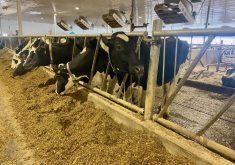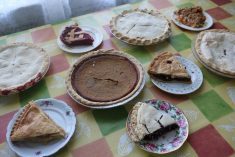BALCARRES, Sask. – Perseverance, luck and a willingness to learn have taken Dennis and Donna McMorris from the bottom to the top with their purebred cattle.
They still recall, with some chagrin, the first time they went to Canadian Western Agribition 10 years ago with their “three little animals,” as Donna puts it.
Taken under their wing by young 4-H members looking after the cattle across the way, they learned what they needed to do. In fact they employed many 4-H members from nearby Neudorf over the past few years to get their cattle ready to show.
Read Also

Farmland ownership fires up Saskatchewan politicians
Saskatchewan politicians debate the enforcement of farmland ownership laws in the province.
“They would work their hearts out and we knew we were going to lose,” Donna said.
But Dennis said that is the way to learn.
“It’s too easy to say I’ve got cattle just like that at home,” he said. “Take ’em to town.”
The McMorrises are calving their 11th crop of Charolais calves out of about 150 cows right now, and they have moved up in the show world.
In 2005, at the 100th annual Regina Bull Sale, they showed the supreme champion and high selling bull.
They also showed the junior bull calf champion at the World Charolais Congress in Edmonton in 2006.
Next month they head back to the Regina sale, which is their main marketing tool because of its proximity to home and its history.
Dennis has been farming since completing a vocational agriculture program at the University of Saskatchewan in 1975. He bought some land near where he grew up.
Donna was working in the Balcarres hospital when they met, married and purchased their home quarter. She still works at the hospital as a health information manager.
While there were always a few cattle around, the couple began seeding cultivated land to grass in the early 1990s. Their decision struck a few locals as odd because highly assessed grain land was not usually put back into grass.
But they were looking at the lower input costs of raising grass and cattle.
“It made me nervous,” Dennis said of farming at the time. “The gross was good but the net wasn’t there. Something had to change.”
About half of their 2,200 acres is now in grass. They use the rest to grow all their own feed.
Within the cattle business, they decided to pursue purebred Charolais rather than a cow-calf operation. Once they saw the colour of animals at the Red Bonanza sale in Alberta, they were hooked and began breeding the red genetics into their existing herd.
They developed a strategy to sell their best calves for bulls and retain all their females.
Any animals that don’t make the cut go into their feeding program, which is the second part of their strategy.
That’s how Dennis came to invent and patent the Bovine Bucket, a feeding system that distributes grain by holes in an augur. The feeder is not yet in widespread production but a manufacturer has signed on to produce it.
Finishing their own animals has been an education. With help from XL Foods in Moose Jaw, they have learned exactly what they needed to do to finish animals properly and satisfy consumers.
Luck has also played a role in their success, and both Dennis and Donna can list many examples.
One is the $5,800 purchase of a half-share in a cow. When the embryos were flushed, the McMorrises ended up with the best calf – the one that won at the World Congress.
They also spent big money on a bull calf that sired their Regina Bull Sale winner.
“He may not have bred to his capability,” Dennis said. “You can pick the right parents but whether they’re going to breed that through or not, you don’t know.”
The McMorrises have sold genetics to the United States and done business with New Zealanders and Australians. Other countries are not yet sold on the red factor.
They say that having the facilities of Optimum Genetics, south of Regina, to collect semen has been a bonus for their operation.
Both say building their herd has involved a steep learning curve but a rewarding one.
“To take something out and show what you’ve done, that’s what it’s about,” Donna said.















